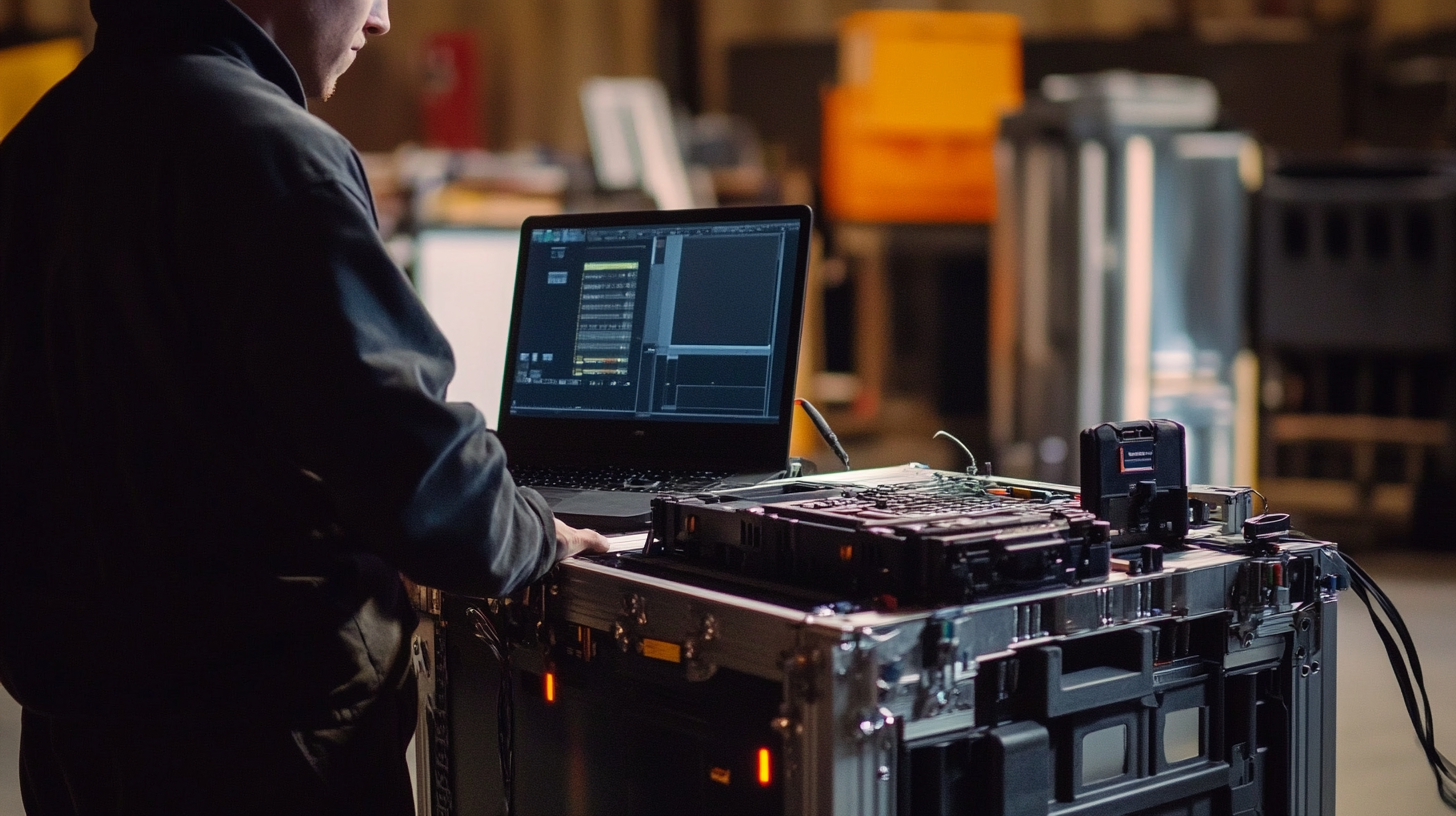How to Maximize Cost Efficiency with Tool Rental Solutions for Global Procurement
In an increasingly competitive global market, organizations are constantly seeking ways to optimize their operational expenditures. According to a recent report by Deloitte, companies that leverage tool rental solutions can achieve cost savings of up to 30% compared to traditional ownership models. This shift towards tool rental is particularly significant in industries such as construction and manufacturing, where the need for specialized equipment often leads to substantial capital investments. The ability to access high-quality tools without the burden of ownership not only enhances cost efficiency but also provides flexibility and scalability to maintain competitive advantages. By implementing effective tool rental strategies, businesses can streamline their procurement processes, adapt to fluctuating project demands, and ultimately maximize their return on investment.

Understanding the Benefits of Tool Rental Solutions in Global Procurement
As global procurement continues to evolve, tool rental solutions are emerging as a cost-effective strategy for businesses looking to enhance operational efficiency. Understanding the benefits of adopting such solutions can significantly impact a company's bottom line. With industries facing rising costs of new equipment, renting tools offers flexibility and reduced financial burden. The global farm equipment rental market, for instance, is projected to grow significantly, highlighting a shift in preference towards rental solutions that allow for better resource allocation.
Additionally, the construction and medical equipment rental markets are experiencing robust growth, driven by similar trends in cost management and accessibility. Companies are increasingly recognizing that renting equipment not only meets short-term needs but also supports sustainability by minimizing unnecessary purchases. By leveraging rental solutions, businesses can also diversify their supplier base, unlocking new value and fostering innovation in their operations. This strategic move is not just about reducing expenditures, but also about enhancing overall procurement practices in a rapidly changing market environment.

Key Strategies for Selecting the Right Tool Rental Provider
When selecting the right tool rental provider, companies can leverage several key strategies to maximize cost efficiency in global procurement. First, evaluating a provider's pricing structure is essential. A report by the Equipment Leasing and Finance Association indicates that businesses can save up to 40% by opting for rentals instead of outright purchases for tools and equipment. This comparison facilitates a clearer understanding of long-term financial implications, allowing for informed decision-making.
Additionally, assessing the diversity of the rental inventory is crucial. Providers who offer a wide range of tools can cater to various project requirements, which reduces the need for multiple vendors. A 2023 industry analysis revealed that companies utilizing comprehensive rental solutions experienced a 25% increase in operational efficiency. This not only streamlines procurement processes but also minimizes downtime caused by equipment shortages.
Lastly, evaluating the provider's customer service and support capabilities can significantly impact procurement success. Reliable after-rental support ensures that any issues are quickly resolved, maintaining workflow continuity. According to a survey, 70% of organizations reported improved project timelines when working with rental providers that prioritized customer service. By focusing on these strategies, companies can enhance their cost efficiency and overall procurement outcomes.
Cost Analysis: Comparing Tool Rental vs. Purchasing Equipment
When evaluating cost efficiency in global procurement, a pivotal consideration is whether to rent tools or purchase equipment outright. According to a recent report by the National Association of Manufacturers, companies can save between 30% to 50% on upfront costs by opting for tool rental solutions. This is particularly beneficial for projects with fluctuating needs or limited durations. The initial capital investment required for purchasing can significantly strain budgets, especially for small to medium-sized enterprises.
Furthermore, tool rental provides added flexibility by allowing businesses to access the latest technologies without the burden of ownership. A study by the Global Equipment Rental Association highlighted that businesses that utilize rental services see a 20% increase in project turnaround times due to the availability of specialized tools tailored to specific tasks. This dynamic capability can enhance operational efficiency, particularly in industries such as construction and maintenance, where the demand for versatile equipment is constant.
Engaging in a thorough cost analysis reveals that while purchasing may offer long-term asset advantages, rental solutions present substantial short-term savings and operational fluidity. As companies shift towards just-in-time procurement strategies, the cost benefits of tool rental are becoming increasingly evident in maintaining competitive edges in their respective markets.
Cost Analysis: Tool Rental vs. Purchasing Equipment
Streamlining Operations: Integrating Tool Rental into Procurement Processes
In today's fast-paced global procurement landscape, integrating tool rental solutions into procurement processes can significantly streamline operations and enhance cost efficiency. By adopting a rental model, organizations can reduce capital expenditures on tools while maintaining access to high-quality equipment. This approach not only minimizes the financial burden of ownership but also reduces the complexities involved in maintenance and storage.
Recent innovations in technology, as demonstrated by partnerships like BigRentz with PermitFlow and SmartEquip's automation for Lowe's Tool Rental, are pivotal in integrating these rental solutions into existing workflows. These advancements facilitate better project permitting and enhance the management of equipment services and repairs through seamless automation. By harnessing digital tools, companies can achieve greater visibility into their procurement processes, which leads to improved operational efficiency and better resource allocation.
Moreover, the trend towards digital solutions in sectors such as Maintenance, Repair, and Overhaul (MRO) underscores the significant impact of technology on procurement strategies. With the rise of smart tools and data integration, companies can now leverage real-time insights to optimize their inventory management, ensuring that tools are available when needed without unnecessary expenditure. Integrating tool rental into procurement processes not only fosters operational excellence but also positions organizations to respond swiftly to market demands.

Best Practices for Managing Tool Rental Inventory and Utilization
Managing tool rental inventory and utilization effectively is crucial for maximizing cost efficiency in global procurement. First, implementing a comprehensive inventory management system is essential. This system should track each tool’s availability, usage history, and maintenance schedule. By utilizing RFID or barcode technology, procurement teams can streamline inventory tracking, reduce loss, and ensure that tools are readily available when needed. Regular audits of the inventory will also help identify unused or underutilized tools, allowing companies to make informed decisions about which tools to keep in stock and which could be eliminated.
Secondly, establishing clear guidelines for tool utilization across departments can significantly enhance efficiency. Setting up a reservation system where teams can book tools in advance will minimize downtime and improve workflow. Moreover, training employees on the proper use and care of rental tools can prolong their lifespan and reduce unnecessary rental costs. Creating feedback loops where users can report issues or suggest improvements can also foster a culture of continuous improvement in tool utilization. By focusing on these best practices, organizations can fully leverage tool rental solutions in their global procurement strategies, ensuring optimal use of resources while controlling expenses.